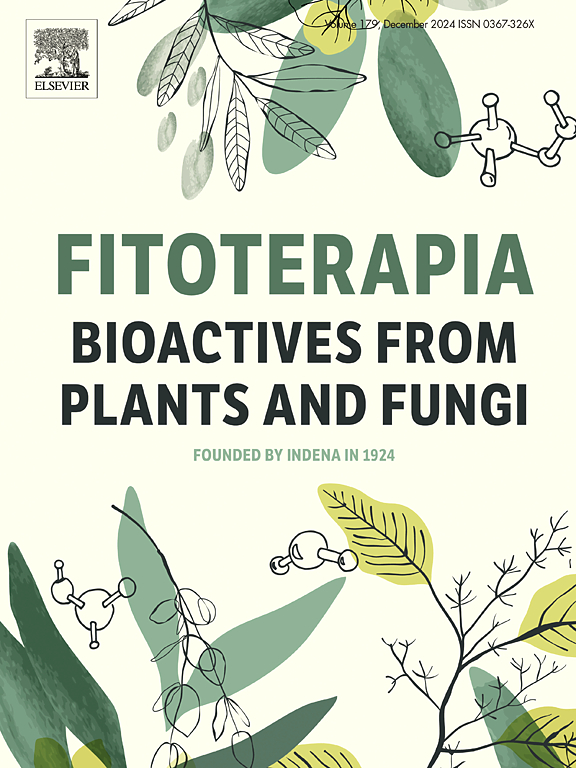利用RP-HPLC-QTOF-MS和MS/MS对枸杞进行化学分析:通过分子对接研究揭示其体内伤口愈合潜力
IF 2.6
3区 医学
Q3 CHEMISTRY, MEDICINAL
引用次数: 0
摘要
枸杞。,Schult。传统上在干旱地区用于治疗各种疾病,使用综合代谢组学,计算和体内方法研究了其伤口愈合潜力。甲醇提取物分析通过RP-HPLC-QTOF-MS/MS鉴定出62种代谢物,包括萜烯、脂肪酸和酚类物质。选择6个关键化合物进行分子对接和计算机药代动力学/毒性分析,显示出较强的预测活性和药物相似性。使用大鼠切除伤口模型的体内评估显示,与对照组相比,使用2%提取物乳膏治疗可显著提高伤口愈合(第14天达到88.63%)、再上皮化、胶原沉积和VEGF表达。研究结果表明,雪梨通过血管生成和组织再生机制促进伤口愈合。这项研究支持了它的传统用途,并突出了它的制药潜力。本文章由计算机程序翻译,如有差异,请以英文原文为准。

Chemical profiling of Lycium shawii via RP-HPLC-QTOF-MS and MS/MS: unveiling its in-vivo wound-healing potential supported by molecular docking investigations
Lycium shawii Roem. & Schult., traditionally used across arid regions for treating various ailments, was investigated for its wound-healing potential using integrated metabolomic, computational, and in- vivo approaches. Methanolic extract profiling via RP-HPLC-QTOF-MS/MS identified 62 metabolites, including terpenes, fatty acids, and phenolics. Six key compounds were selected for molecular docking and in silico pharmacokinetic/toxicity analysis, showing strong predicted activity and drug-likeness. In vivo evaluation using a rat excision wound model revealed that treatment with a 2 % extract cream significantly enhanced wound closure (88.63 % by day 14), re-epithelialization, collagen deposition, and VEGF expression compared to controls. The findings suggest that L. shawii promotes wound healing through angiogenesis and tissue regeneration mechanisms. This study supports its traditional use and highlights its pharmaceutical potential.
求助全文
通过发布文献求助,成功后即可免费获取论文全文。
去求助
来源期刊

Fitoterapia
医学-药学
CiteScore
5.80
自引率
2.90%
发文量
198
审稿时长
1.5 months
期刊介绍:
Fitoterapia is a Journal dedicated to medicinal plants and to bioactive natural products of plant origin. It publishes original contributions in seven major areas:
1. Characterization of active ingredients of medicinal plants
2. Development of standardization method for bioactive plant extracts and natural products
3. Identification of bioactivity in plant extracts
4. Identification of targets and mechanism of activity of plant extracts
5. Production and genomic characterization of medicinal plants biomass
6. Chemistry and biochemistry of bioactive natural products of plant origin
7. Critical reviews of the historical, clinical and legal status of medicinal plants, and accounts on topical issues.
 求助内容:
求助内容: 应助结果提醒方式:
应助结果提醒方式:


